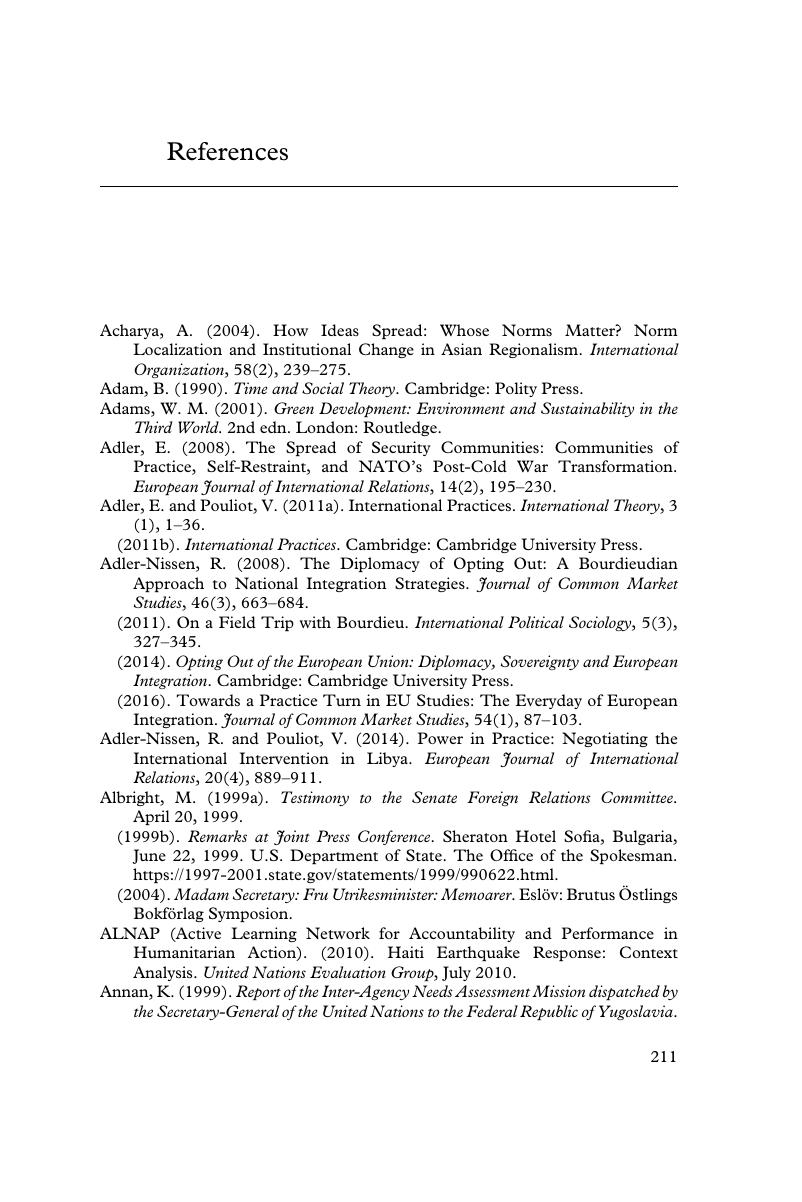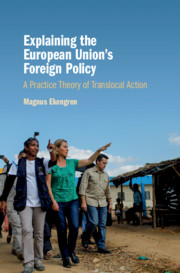Book contents
- Explaining the European Union’s Foreign Policy
- Explaining the European Union’s Foreign Policy
- Copyright page
- Contents
- Figures and Tables
- Acknowledgments
- Abbreviations
- 1 Explaining EU Foreign Policy Action
- 2 Outline of a Practice Theory of Translocal EU Foreign Policy Action
- 3 The EU’s Translocal Foreign Policy Actions in Kosovo 1999
- 4 The EU’s Translocal Foreign Policy Actions in the Haitian Disaster 2010
- 5 Toward a Theory of the Translocal Recognition Cycle
- Book part
- References
- Index
- References
References
Published online by Cambridge University Press: 24 September 2018
- Explaining the European Union’s Foreign Policy
- Explaining the European Union’s Foreign Policy
- Copyright page
- Contents
- Figures and Tables
- Acknowledgments
- Abbreviations
- 1 Explaining EU Foreign Policy Action
- 2 Outline of a Practice Theory of Translocal EU Foreign Policy Action
- 3 The EU’s Translocal Foreign Policy Actions in Kosovo 1999
- 4 The EU’s Translocal Foreign Policy Actions in the Haitian Disaster 2010
- 5 Toward a Theory of the Translocal Recognition Cycle
- Book part
- References
- Index
- References
Summary

- Type
- Chapter
- Information
- Explaining the European Union's Foreign PolicyA Practice Theory of Translocal Action, pp. 211 - 225Publisher: Cambridge University PressPrint publication year: 2018



